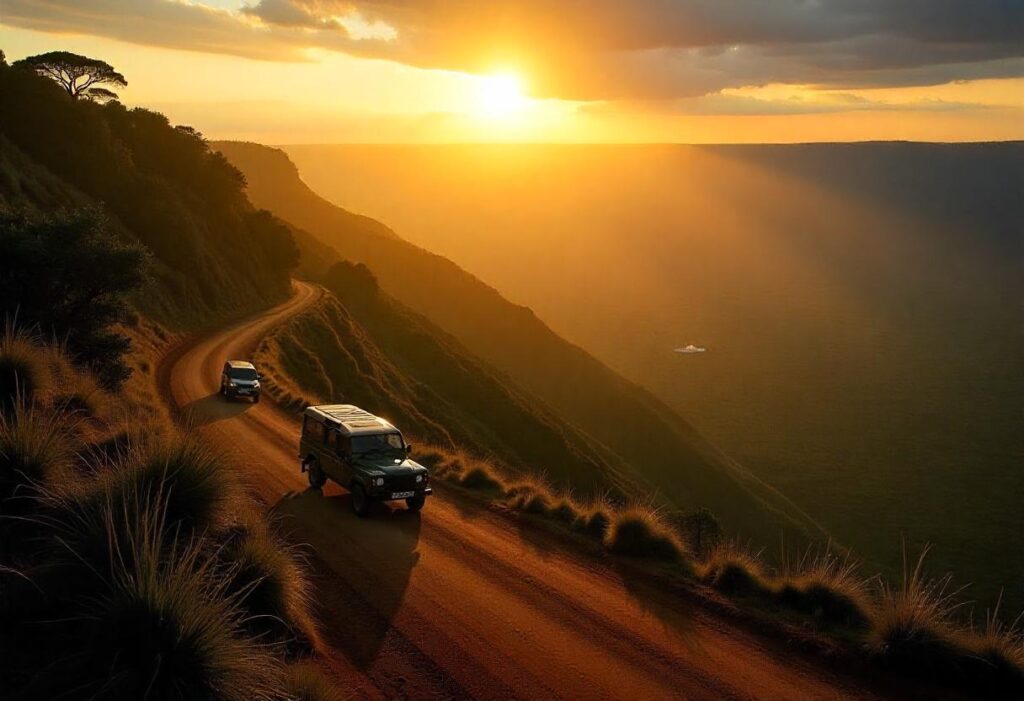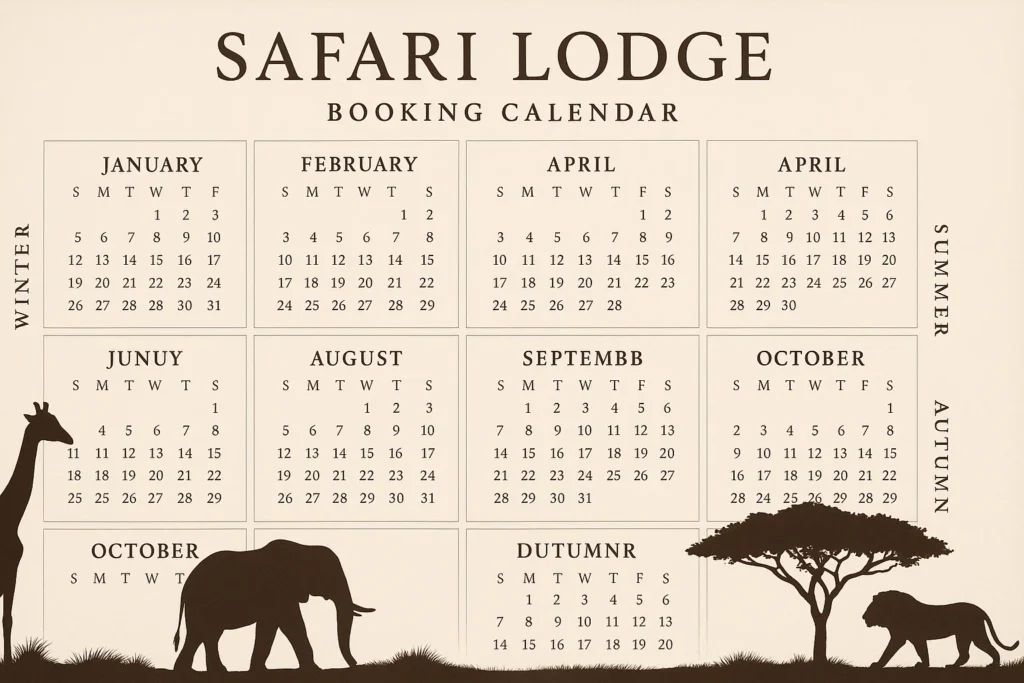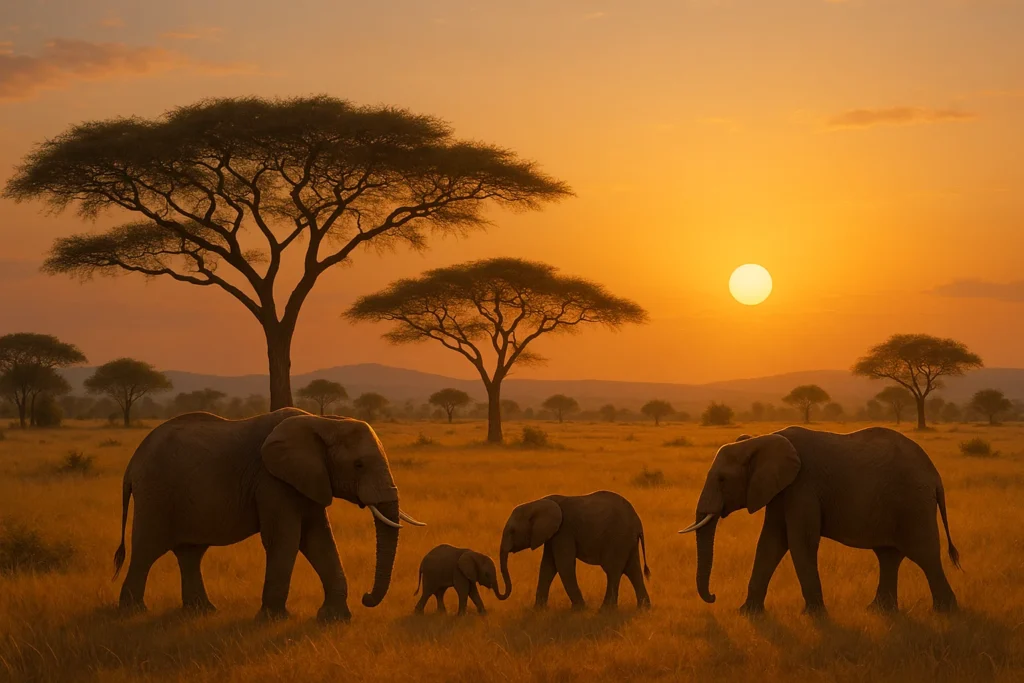Experiencing a Ngorongoro Crater game drive is like stepping into a wildlife documentary in real time. With its breathtaking views, dramatic descent, and astonishing density of animals, the crater offers a safari like no other — compact, intense, and unforgettable. This article walks you through exactly what to expect, from the early-morning descent to the incredible sightings waiting on the crater floor.
The magic begins at sunrise: descending into the crater
A Ngorongoro Crater game drive starts early. Most vehicles begin queuing at the descent road gate just before dawn, when the air is crisp and mist clings to the rim. As your guide handles park formalities, the sky begins to glow, offering the first glimpses of the vast crater floor below.
The descent into the caldera is steep and winding. With every turn, you’re surrounded by ancient forest and sweeping views. It feels like entering a hidden world — and in many ways, it is. At the bottom, an entirely different landscape awaits: open grasslands, swamps, lakes, and woodland, all teeming with wildlife from the very first minute.
Wildlife encounters: a high-density safari in a compact space
Unlike many safari parks that require long drives between sightings, the Ngorongoro Crater is packed with animals. It’s one of the few places in Africa where you can potentially spot the Big Five in a single morning. Key highlights include:
- Black rhinos, rare elsewhere, are occasionally seen grazing in the distance
- Lion prides roam freely across the crater floor
- Hyenas and jackals are often spotted near kills or patrolling the plains
- Herds of wildebeest, buffalo, and zebra move across the landscape
- Flamingos line the shallow Lake Magadi, especially during the wet season
- Elephants, mostly older bulls with massive tusks, frequent the marshy areas
The sheer density of animals makes this one of the most rewarding and dramatic wildlife experiences in Africa.
Important rules and time limits inside the crater
The Ngorongoro Conservation Area Authority enforces specific rules to protect the fragile ecosystem:
- Each vehicle may only stay inside the crater for up to 6 hours per game drive.
- You can descend into and ascend from the crater only once per day with a valid permit.
- Visitors must remain inside the vehicle at all times, except at designated picnic areas.
- Off-roading is not allowed anywhere inside the crater.
These regulations help preserve the unique balance of the crater and enhance the exclusivity of the experience.
A different kind of safari: short, intense, and unforgettable
Compared to the vast, open savannahs of the Serengeti or Masai Mara, a Ngorongoro Crater safari experience is more compact but arguably more intense. You’re not chasing sightings for hours — you’re immersed in wildlife action almost constantly.
It’s a perfect complement to longer stays elsewhere. Many travelers combine a day in the crater with several days in the Serengeti or Tarangire for contrast.
Practical tips for a smoother experience
Dress in layers
Mornings on the rim can be cold (as low as 5–10°C), but it warms up quickly on the crater floor. Wear layered clothing you can peel off as needed.
Bring binoculars
Despite the crater’s compact size, wildlife often stays at a distance — especially rhinos. Good binoculars significantly improve the experience.
Start early to avoid congestion
Being among the first to descend (around 6:30 AM) gives you better light, quieter sightings, and a more tranquil atmosphere.
Pack snacks and water
You’ll stop at a picnic site for a quick break, but there are no shops or services inside the crater.
Expect a bumpy ride
The descent road is steep and unpaved. Vehicles can be dusty and noisy — embrace it as part of the adventure.
FAQs
Most drives last around 6 hours, due to park regulations. It’s usually a half-day activity that still delivers a full safari experience.
No, there are no accommodations on the crater floor. However, there are lodges on the rim that offer stunning views and quick access in the morning.
Self-driving is technically allowed, but due to complex rules and terrain, most travelers choose guided safaris.
Dry season (June–October) offers better visibility and easier roads, but green season (November–March) brings dramatic scenery and migratory birds.






